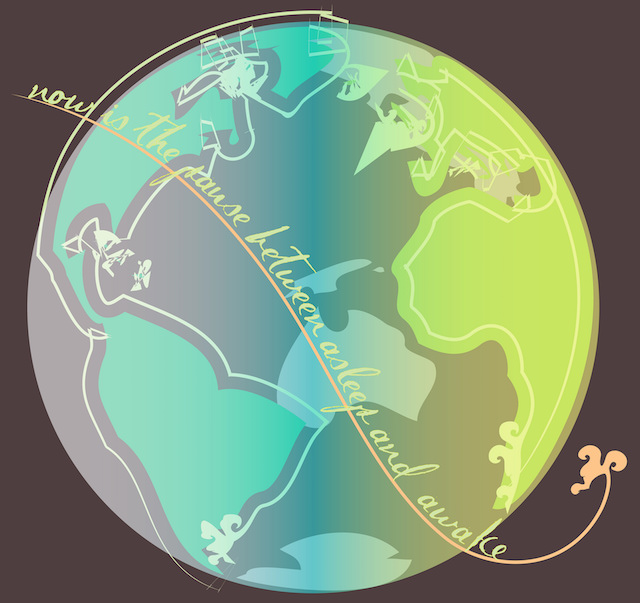
“When we don’t know how to handle the
suffering inside us,
we continue to suffer,
and we make people around us suffer.”
~ Thich Nhat Hanh
~
Our route to happiness for the Spring Equinox.
Last year, I experienced the dark side of an individual who expressed emotions of anger and hatred toward me, along with harsh criticism, insults, and cruel words. This occurred after an emotionally fragile visitor stayed in my cottage in France to escape a recent trauma.
The individual was out of balance and needed time to recover, but did not adapt well to the unfamiliar and foreign environment, and previous illnesses resurfaced. My guest believed that external surroundings were at fault and the property and immediate environment were deemed to be the cause of dis-ease.
Internal un-ease, suffering, and pent-up anger needed to be expressed and transmuted externally. This was directed at me, and I was blamed for internal un-rest and external physical symptoms—but the root cause was something much deeper.
The guest was unaware of this even after experiencing a repetition of manifested illnesses over many years. Dis-ease had brought darkness to light, but the individual failed to see the metaphor and instead chose to remain in darkness, blaming external factors.
There are two especially beautiful words in the Irish Gaelic language:
- Athas (pronounced aw-has), which means bliss or delight resulting from the internal feeling of happiness.
- Aoibhneas (pronounced eev-nas), which translates as bliss or delight in the form of the “treasures” from external happiness.
We witness how others suffer internally with their external expressions. Our bodies correspond with nature and to be at one with the evolving seasonal changes, we need continual equilibrium within ourselves.
The Vernal Equinox on March 20th celebrates the rebirth of spring when the sun moves from the Southern to the Northern Hemisphere and reaches an exact position on the line of the equator. The length of day and night is then equal.
Druids refer to this as Alban Eilir (the light of the earth) and we express emotions of unconditional gratitude for equal illumination and the joys that springtime brings.
When we remind ourselves of the continuous cycle of life, the alternating seasons, and the balance of light and dark, there is no un-ease within nature, but rather a continuation. John O’Donohue, the 20th century Irish poet described how the “rhythm of experience, nature, and divinity followed a circular pattern.”
But we can learn from our ancestors. Through Buddhist and Celtic teachings, we understand the potency and symbolism of internal happiness and the equilibrium of our own darkness and light. We can celebrate this knowledge during the March Equinox.
The term duhkha in Buddhism translates into English as:
- Un-ease/Dis-ease
- Illness/Suffering.
When we lack self-acceptance, or feel unhappy, we feel un-ease and we hold an internal grudge against ourselves. This manifests metaphysically and is displayed externally through our physical bodies or verbal actions.
We hold no grudge against the darkness of winter. Why would we hold a grudge against our own personal darkness? We accept “the light of the earth” at the equinox. Why not also accept that our inner light will return when we regain balance? Our ancestors knew this.
Our experiences provide us with emotional insight, acting as a mirror to our inner world.
We can heal our inner darkness with the knowledge that the light has rhythm and a place within us on our continuing cycle.
The Celtic Druids appointed satirists, like the Trickster figure of the Native American Lakota Indians. Heyoka mimicked the facial expressions and body language of tribal members.
These satirical figures would act out the negative behaviour that individuals displayed in an exaggerated fashion. This allowed a person to observe, like a human mirror, how they appeared to others on an external level.
I honour our ancestors at Alban Eilir in Celtic Druid tradition with a solitary ceremony. I plant seeds knowing that when they have experienced internal growth within the dark earth, they can emerge into the light above ground to flourish.
The Eightfold Path of Buddhism accepts our cyclical journey on earth. Here is how we can apply it to the equinox:
- Right Action. Appoint ourselves as personal satirists to recognise how negative expressions toward others mirror our internal suffering.
- Right View. See our emotional suffering as cyclical and understand that it will cease, like the darkness of winter.
- Right Effort. The International day of Happiness on March 20th, founded by the United Nations, is for all of us. Their mission statement addresses the “challenges faced by humankind in the ultimate quest to achieve happiness.”
- Right Speech. Share our joy and beautiful words with each other, in person or through social media.
- Right Livelihood. Accept the Spring Equinox as the equal light for its purpose and duality in nature.
- Right Concentration. Have consideration for the joys of spring, the process of rejuvenation it displays, and how this relates to our external expressions.
- Right Intention. Greet each other during Alban Eilir, and every day with happiness and with thoughtful words. From the Irish Gaelic, we use the term go n-eirí an t-ádh leat, which translates as: “May luck rise with you.”
- Right Mindfulness. Living every day with thoughtful feelings, intentions, and actions.
In Buddhist tradition, we bow with gratitude, acknowledgement, and continuing acceptance. With the seasons that follow, the guest I had may one day realise the root cause of their un-ease.
Whichever way we choose to acknowledge and honour the Vernal Equinox in March, the cycle, the pattern, and the message is the same: Internal to external. Dark to light.
There is no suffering: only acceptance.
~
~
~
Author: Shelley Dootson-Greenland
Image: J.H. Fearless/Flickr
Editor: Travis May


 Share on bsky
Share on bsky




Read 0 comments and reply